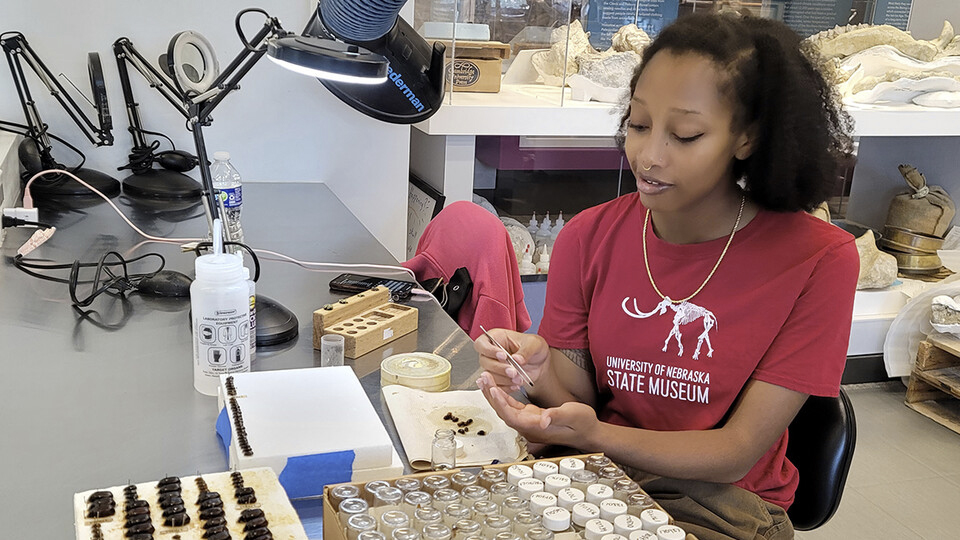
Local museums benefited this summer from the work of talented students.
The Summer Internship Program, launched this year by the University of Nebraska–Lincoln’s Career Services, connects nonprofits with students, especially first generation or Black, Indigenous, or persons of color, who have not yet had an internship. Through this program, organizations offer paid experiences to students, who gain meaningful experiential learning opportunities and mentorship within the community, as well as skills, knowledge and career insight.
Four of the eighteen students participating in the Summer Internship Program interned at museums around Lincoln this summer. Museums are an integral part of communities, as they preserve history and tell stories from the past for generations to come.
Not only are museums valuable for telling stories, but they can also inspire youth in the community. Nadija Logans, a math/mathematical finance major, interned as a Museum Collections research assistant in entomology for the University of Nebraska State Museum.
“When I am preparing specimens in the Visible Lab, it gives people in the Lincoln community a chance to not only hear about some cool bugs, but they can also get a sneak-peak at the processes involved in research,” Logans said. “I also really cherish the opportunity I have to inspire future scientists. Field trips and younger children often come through the museum and watch the work being done in the Visible Lab, and I know that being able to share what I am doing can possibly spark an interest in them. One of my favorite parts of my job is seeing kids’ faces light up when they are able to learn more about entomology and watch how I prepare specimens for the museum. Even though insects can be a little bit scary at first, it makes me happy that most people (both young and old) are still open to learning more about them.”
Logans emphasized the importance of museums for inspiring and educating people of all ages in an interactive space.
“Museums allow people in the community to dig deeper into their interests in science and the world around them,” Logans said. “People can read books, but being able to see specimens firsthand and ask questions can really be a game-changer for those who want to learn more. And there’s never a wrong time to learn about science, so the museum is perfect for people of all ages.”
The students in these internships who have been gaining a lot of knowledge and skills aren’t the only ones benefiting from the program. They have brought valuable perspectives that positively impact the organization as well.
Shatha Al-Gharib, a business administration major, interned at the International Quilt Museum as a museum collections intern.
“Museums are a way for a community to come together to learn about history and culture,” Al-Gharib said. “At the international quilt museum, I contribute to that by helping with the preservation and care of the quilts so they can continue to get displayed for as long as possible.”
Al-Gharib has been able to learn about the behind-the-scenes work that takes place in a museum.
“Shatha has assisted visiting scholars, including Elizabeth Townsend (professor of law, Tulane University) and Paula Richter (curator, Peabody Essex Museum) in their object research. She has also assisted IQM Collections staff in preparing for our annual international advisory board meeting, worked on care and conservation of IQM’s WWII quilt collection, and attended to many additional conservation tasks with other students and volunteers,” said Sarah Walcott, the Collections Manager at the International Quilt Museum. “Shatha’s positive attitude and attentiveness to her work have made her a wonderful addition to the IQM Collections team.”
Al-Gharib acknowledged her opportunity to learn about the importance of museums and encouraged others to come visit the International Quilt Museum so that they, too, take advantage of the opportunity to dive into the culture and history of the quilts displayed there.
“Before my internship at the International Quilt Museum, I had no idea of the importance of quilts in many people’s lives, but I’ve learned so much in just a couple weeks,” Al-Gharib said. “I hope others come visit the museum to learn about the artistic and cultural significance of quilts and learn about the stories behind some of the quilts!”